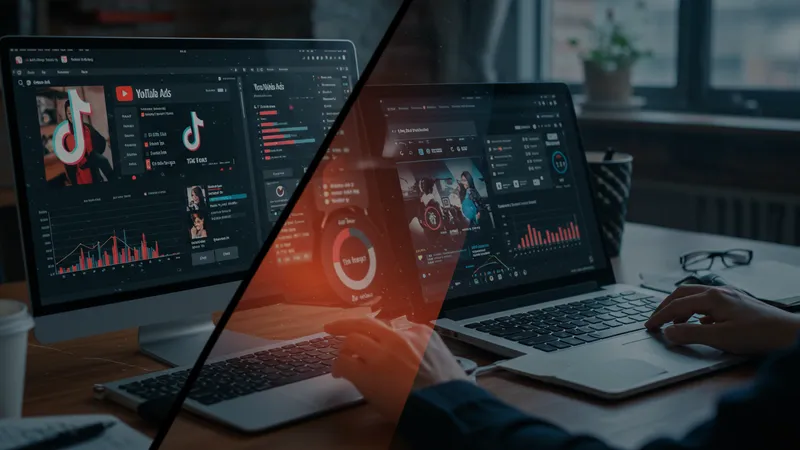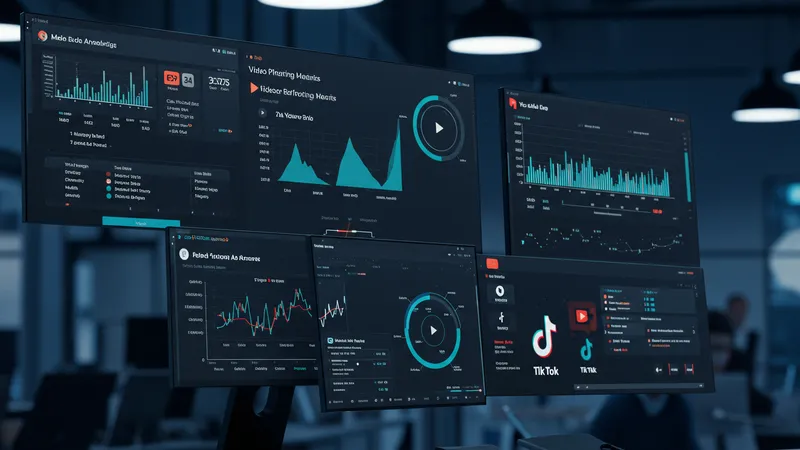

Performance marketing has transformed the way brands leverage video content, shifting the focus from traditional awareness-based video ads to campaigns that are measured and optimized for concrete results. Rather than simply counting views or likes, video performance marketing is about deploying strategies and technologies to track user actions—be it signups, purchases, app downloads, or specific site interactions—directly attributable to video advertising efforts.
This approach harnesses data and analytics to refine video creatives, targeting, and placements in real-time. Brands and marketers now evaluate success through metrics that align directly with their business objectives, using advanced platforms and detailed attribution models. By treating every video as a potential conversion driver, campaigns become purpose-built for measurable impact instead of broad brand messaging alone.

Video performance marketing stands apart from traditional video advertising by putting measurable actions at the forefront. While older strategies relied on estimating impact through impressions and watch times, today’s performance-driven platforms offer granular conversion metrics, dynamic optimization, and cross-channel attribution. This empowers brands to see a clear line from video spend to desired business outcomes.
Across platforms like YouTube, Meta, and TikTok, marketers utilize targeting features, lookalike audiences, and direct shoppable links. These features allow for precise experimenting and instant feedback, making it easier than ever to double down on what moves the needle. Small tests lead to big insights and allow budget to be allocated toward the highest-converting creative approaches.
Some of the most compelling real-world results come from integrating video performance marketing tools with CRM systems. This closes the loop, enabling advertisers to connect video views and ad engagement to customer journeys, lifetime value, and multi-touch attribution models. Ultimately, this evolution means that every second of video placement can be justified with real business impact, driving smarter strategy and ROI for brands of all sizes.
Finally, measuring performance with video has enabled agile improvements. Campaigns are constantly optimized based on mid-campaign learnings, and marketers no longer need to wait until the end of a flight to judge effectiveness. In a digital landscape defined by speed and adaptability, video performance marketing stands as an essential advantage—fueling growth and actionable insights at every turn.
As we dive deeper into the techniques, use-cases, and optimization strategies powering this revolution, even more surprising best practices and critical considerations come to light. The deeper details reveal even more valuable insights ahead as we explore the dynamic layers of video performance marketing.
Platforms like YouTube Ads, TikTok For Business, and Meta Video Ads offer robust tools for marketers seeking tracked, measurable conversions through video. These platforms provide detailed conversion tracking pixels, audience segmentation, and dynamic bidding strategies. By using these capabilities, advertisers can design campaigns whose sole purpose is driving outcomes—be it purchases, form fills, or app installs—instead of simply generating exposure.

YouTube’s TrueView for Action, for example, is built specifically to nudge viewers toward performing an action, such as clicking a link or completing a sign-up. TikTok’s algorithm boosts content that elicits quick engagement, which aligns perfectly with performance marketing objectives. Meta’s family of platforms offers powerful objective-based campaign setups, with granular reporting tied to each stage of the sales funnel.
These platforms enable split testing of creative and targeting variations. With real-time analytics dashboards, marketers can swap underperforming assets, tweak messaging, or reallocate spend—all while the campaign is live. These agile tools are the backbone of performance-focused video campaigns in fast-moving digital environments.
One universal tip: always begin with a clear, measurable goal tied to business needs—whether that’s increasing product trials, email subscriptions, or driving direct sales. Use each platform’s native analytics to trace every conversion from initial view to final purchase event. This disciplined approach ensures truly actionable insights, better budget optimization, and ongoing improvement as the campaign unfolds.
The real power of video performance marketing comes from precision measurement. Success is no longer judged by surface-level statistics but by granular analytics that map video interaction to quantifiable results. Platforms provide attribution models and dashboards that break down campaign performance by view, engagement, conversion, and post-click behavior.

Typical metrics include view-through rate (VTR), click-through rate (CTR), cost per action (CPA), and overall return on ad spend (ROAS). Advanced tracking can reveal cost per qualified lead or even lifetime value of customers acquired through true video performance marketing efforts. Meta’s Ads Manager, YouTube’s Analytics suite, and TikTok’s reporting tools all support this level of insight.
Conversion pixel installation on landing pages is vital. It links ad views to downstream website events, giving a direct read on which creatives and audiences perform best. Marketers can then pivot strategies mid-flight, boosting winners and trimming ineffective approaches based on genuine conversion data, not assumptions.
By embracing a data-centric culture, brands gain not just stronger ROI, but also deeper understanding of what drives their audience. Over several campaign cycles, these insights build a feedback loop where each new campaign leverages established learnings, steadily enhancing future performance and marketing outcomes.
Effective video performance marketing isn’t just about the platform—it’s about the story told within each second of video. Short, direct narratives that feature clear calls-to-action tend to drive the highest conversion rates. Successful TikTok ads, for example, capture attention in the first few seconds and prompt viewers to take immediate action, often through distinctive sound, overlay text, or native platform cues.

On Meta and YouTube, customizing video lengths and formats to suit audience preferences is essential. User-generated style content, testimonial-driven ads, and interactive product demonstrations all perform well when designed with conversion in mind. Best practices also include ensuring branded elements are clear early, as viewers may skip or scroll before traditional branding would appear in a standard video ad.
The most sophisticated advertisers test multiple creative variations simultaneously, tracking precise outcomes for each. Even small differences—like color choices or headline phrasing—can dramatically impact campaign performance. These creative learnings become vital assets for continually optimizing future video efforts and driving measurable growth.
Social proof plays a significant role in conversion-focused video. Adding reviews, user stories, or simple overlays highlighting a product’s popularity further motivates potential customers. When these elements are woven into performance strategy, creative investments yield not only immediate actions but also richer, longer-term brand engagement.
The hallmark of video performance marketing is persistent optimization. Whether on YouTube, TikTok, or Meta platforms, successful campaigns are approached as iterative processes. Marketers routinely review analytics dashboards to spot patterns, uncover bottlenecks, and identify new creative or targeting opportunities that can drive further improvement.

A/B testing runs at every layer: creative assets, audience segments, bidding strategies, and landing pages. Automation tools within these platforms can even adjust bids and placements in real-time, allocating resources toward the combinations that generate the most conversions per dollar spent. This ensures campaigns remain fluid and agile in response to real-world results.
Multi-touch attribution models have gained traction, giving credit not just to one ad view or platform, but the collective video touchpoints that shape a buyer’s journey. Advertisers can thus fine-tune not just single ad performance, but the entire multi-platform ecosystem—finding the optimal sequence of videos and placements that turn interest into concrete action.
Ultimately, brands treating video as a performance channel unlock deeper insights, bolster accountability, and reduce wasted marketing budget. By embracing a data-driven, always-on optimization mindset, any campaign can improve its efficacy, boost return on ad spend, and reinforce a brand’s value through every measurable interaction.